Euphorbia trigona care
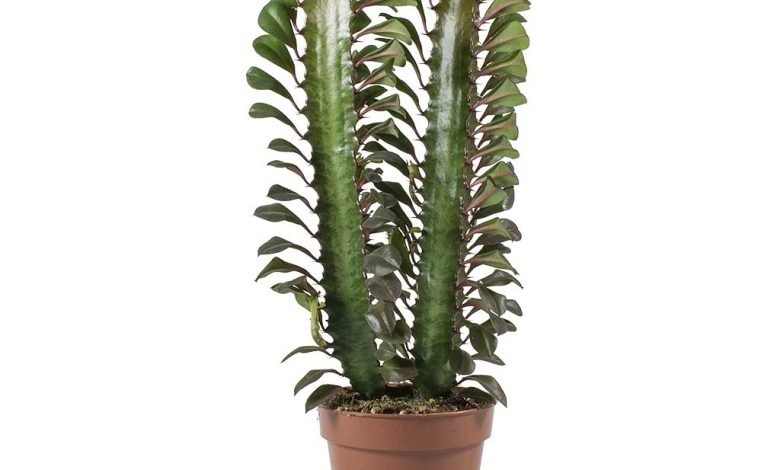
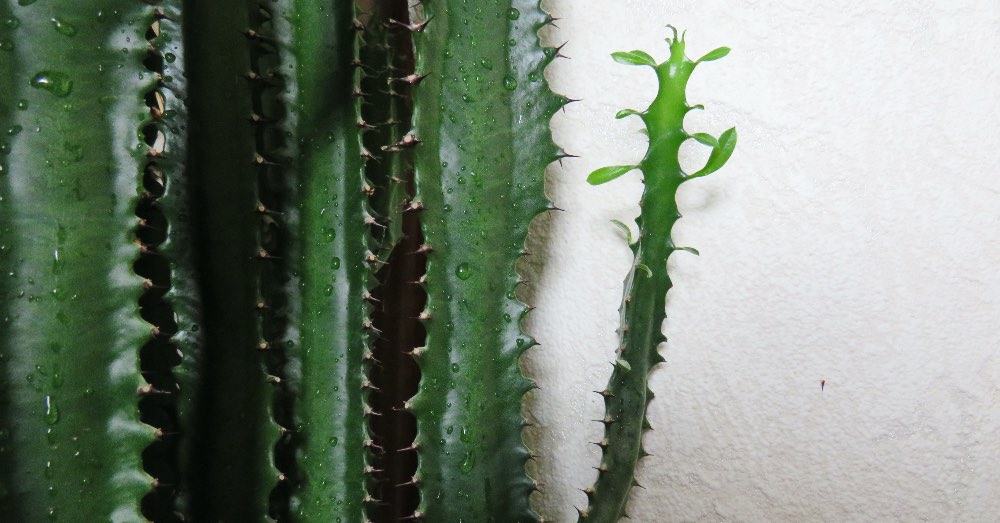
You don’t have to be a cactus lover to fall madly in love with this one. And not only because its area of spines is less than other congeners. In addition, the care of the Euphorbia trigona is so simple that it is the perfect plant if we consider how to make a low-maintenance sustainable garden. The clue is clear: it is an extremely drought-resistant cactus. A detail that can allow us to save that precious liquid that is water.
Understanding why the care of the Euphorbia trigona allows us to call it a rustic plant requires knowing its origins. Coming from South-East Africa, she is more than used to being thirsty. Something that is not at odds with having normal growth or even with being attractive. Because these are, precisely, two of the virtues of this considered cactus that, really, it is not. Not only can it reach up to four meters in height. Added, its beauty of intense color breaks with the canons of what we consider a desert plant.
So let’s discover more than one plant that is perfect to include among our indoor plants but also to enjoy on the balcony or in the garden.
7 CARE OF THE EUPHORBIA TRIGONA
Let’s start with something important. Although it is popularly understood as such, the truth is that Euphorbia trigona is a succulent that does not belong to the cactus family. This common misunderstanding is, however, perfectly logical. In the list of popular names that it receives, there is not only the African milk tree or milk plant. But, beyond this pair, the most notorious is the name of cathedral cactus. A name that is, without a doubt, the reason for this misunderstanding.
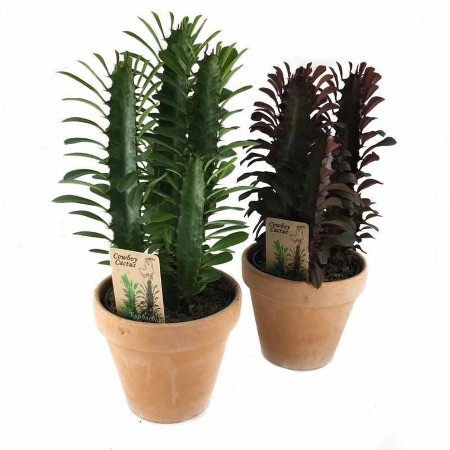
For many connoisseurs in the matter, this succulent plant is the intermediate step between cacti and plants. But why is it important to know that it is not a cactus? Easy. Euphorbia trigona care, while similar to its thorny cousins, is not purely that of a cactus. Something important, especially with regard to its light and temperature needs, to be able to enjoy its growth normally.
Before seeing in detail what it needs, it is interesting to know a couple of details about its unique morphology. On the one hand, it is characterized by having a column bearing with ramifications. On the other, its leaves are extremely striking. Not only because they are shaped like a spatula and are arranged around the stems. Added, because as the plant grows these will only appear in the upper parts.
1. Lots of light but never direct
Taking into account its place of origin, it is logical to think that it needs a good dose of daily light. However, beware: we are talking about a plant that, exposed directly to the sun, can suffer. Not only is it in danger of burning its leaves, but also spots may appear.
To avoid this, the ideal is to place it in a well-lit space but without direct sun. If we grow it outdoors, we will have to find a semi-shaded place to avoid burns.
2. Warm temperatures, one of the most important care for Euphorbia trigona
Being as it is originally from Africa, it does not tolerate the cold very well. The ideal for her are warm environments that range between 20 and 28 degrees. What’s more: if it is grown indoors and in months other than winter it loses its leaves, our plant will be warning us that it is cold.
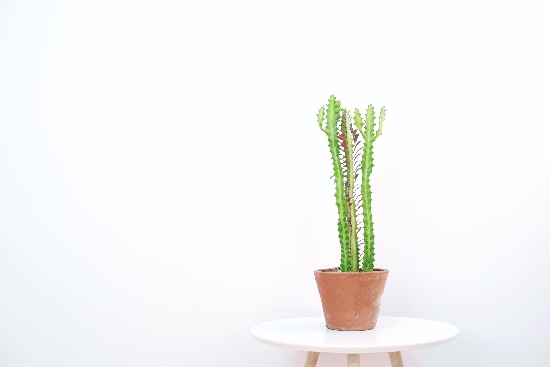
If we grow it outdoors, we will have to be extremely cautious. Exposed to less than 10 degrees, it is more than likely to die.
In addition, we will have to take care of the place of cultivation. It does not tolerate air currents, sudden changes in temperature or artificial heat, such as radiators, at all.
3. Appropriate irrigation for each season of the year, key to your well-being
How to water succulents correctly is, on many occasions, a pending issue. We tend to overdo it with water, putting the health of our plant in serious trouble. Precisely and with regard to the care of the Euphorbia trigona, irrigation is the one that we will have to watch the most.
There is only one vital guideline to correctly water this Euphorbia: always do it with a dry substrate. It is preferable to do a deep but spaced irrigation, than to flood it. Something that will be detrimental to its roots and a reason for it to rot or even fungus.
The most important thing is to maintain a regular pattern in the hot months, which is their growing season. During the cold months, we can space it up to 10 days.
4. Subscriber, only in the warm months
As we said, this plant can reach a size that is more than considerable. Something for which you not only need a good base space to grow but also take care of your nutrient intake.
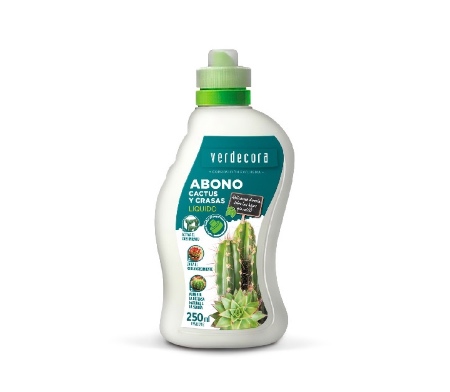
To do this, the ideal is to fertilize our plant during the spring and summer months: the two seasons in which our Euphorbia is in full growth.
5. Pruning, a task to forget
It is one of the usual queries regarding the care of Euprhobia trigona. And no: it does not require any type of pruning, nor is it even beneficial for it.
6. Transplant to help it grow, another care of the Euphorbia trigona not to forget
As we said at the beginning, one of the main characteristics of this succulent is that it has a great development. It is true that, to reach those heights that we talked about, it will need to be planted directly in the ground. However, if we grow it in a good-sized pot, it will also have an interesting growth.
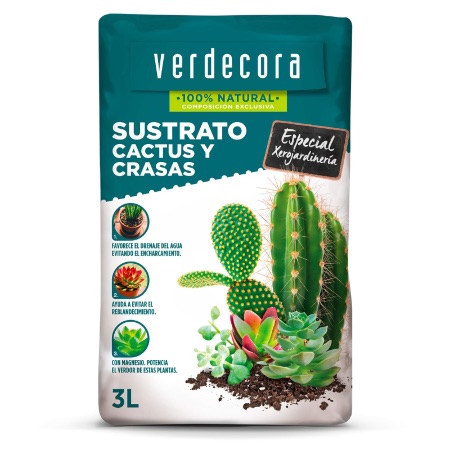
If we enjoy it in a pot, a regular transplant will be necessary. When is the ideal time to transplant it? When its roots stick out of the drainage holes. It is key that we postpone this task until spring, since the temperature will help our Euphorbia to root correctly. And as important as the when is the how. To ensure the well-being of our plant, you will not only need effective drainage. Also of a loose substrate that favors the expulsion of excess irrigation water.
7. Pests and other diseases that we have to watch out for
Despite the fact that it is a rustic species, the appearance of pests or diseases can be a sign that we are not fulfilling some of the care of the Euphorbia trigona.
If we discover whitefly among its stems, it is more than likely that it has appeared because we are subjecting the plant to excessive drought. If it is the fungi that make an appearance, it will respond to excess watering or even poor drainage.
Do you dare to enjoy this African wonder in your home? You will not regret including it among your plants!


![Photo of Ammonium Sulfate: [Concept, Operation and Application]](https://www.complete-gardening.com/wp-content/uploads/2022/08/ammonium-sulfate-concept-operation-and-application-390x220.jpg)
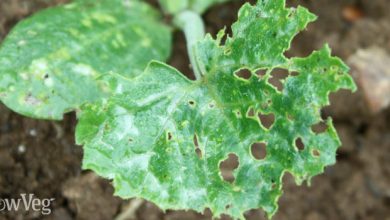
![Photo of Brown Spots on Leaves: [Detection, Causes and Treatment]](https://www.complete-gardening.com/wp-content/uploads/2022/08/brown-spots-on-leaves-detection-causes-and-treatment-390x220.jpg)